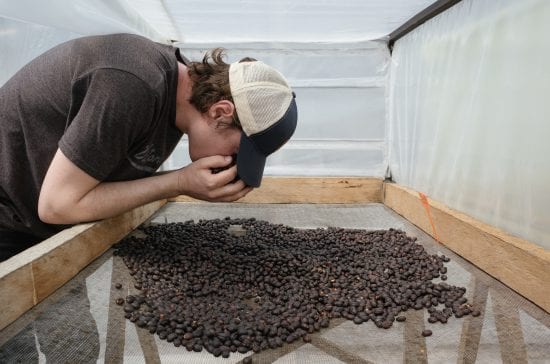
Kay Cheon, third-place finisher at this year’s United States Barista Championship, recently visited the farm his competition coffee came from, Hacienda La Papaya in Ecuador. He breaks down his trip for us in this photo journal.
BY KAY CHEON
SPECIAL TO BARISTA MAGAZINE
Photos courtesy of Kay Cheon
Placing third place in the 2018 United States Barista Championship came as a shock to me, especially in my first year of competition. My goal for the weekend had been to get into finals, but when I looked around at the other competitors I was standing next to before they called the six of us up, I felt like I had already achieved so much.

Todd, the owner of Dune Coffee Roasters (where I currently work), had talked to me about going to Ecuador to visit Hacienda La Papaya, where Juan Peña had produced the coffee I used for competition. But while I was on shift one day, Todd called and said that Noah Namowicz from Cafe Imports had gotten in touch and invited me to go to Ecuador in two weeks.
I met up with Cole McBride, the 2018 USBC winner who would also be going on the trip, in Houston. Both of us had used coffee from Juan Peña this year, and I was so excited that the same producer’s coffee had been represented in two USBC finals performances. The morning after we landed in Quito, we met up with Piero Cristiani, green buyer for Cafe Imports, and Victor Pagan, content specialist and photographer for Cafe Imports. Even though we were unable to get on our flight to Cuenca to Hacienda La Papaya, we took advantage of the time and explored Quito.

After we finally caught our flight to Cuenca, Juan Peña and Diego Mejía, this year’s barista champion of Ecuador, met us at the airport to take us into town. Our first stop was Sinfonía, the cafe Juan and Diego are working on opening together. Along with Piero, they set up a cupping for Cole and I, from which Cole chose the lot of coffee that he would be using for the World Barista Championship in Amsterdam next month.

The next day, the six of us drove into Saraguro, and from there it was another drive to Hacienda La Papaya. Juan gave us a quick tour before insisting we would get the full explanation tomorrow. We all got up early on our own accord—some of us walking the farm before the sun came up and marveling at the views. At 2,100 meters above sea level, the views were aplenty, especially when we hiked to the top to explore all the sections—or “blocks” as Juan calls them—of La Papaya.

Juan and Diego both gave us a comprehensive explanation of the processes that go into running the farm. These included the processing of coffee, as well as how the farm structures job responsibilities, yearly goals, and progress. All of it was very impressive, and it became very clear that the level of quality of Juan’s coffee is no accident, and instead the result of very intentional and dedicated work.

While Juan and Diego treated us with the utmost hospitality, from serving us first at dinner to answering all of our questions, Piero and Victor were both amazing travel companions, being able to translate for us as well as making sure Cole and I had everything we needed. The opportunities that came with being at origin with all of these people were numerous, from being able to taste coffees with Juan and Diego, to brewing our competition roasts of La Papaya for Juan, to being able to see and touch the coffee that La Papaya is producing. Here are more photos from the farm, along with captions detailing what we did and learned on this trip.







 ABOUT THE AUTHOR
ABOUT THE AUTHOR
Kay Cheon works as a coffee educator and bartender in Santa Barbara, Calif., where he is privileged enough to share what little knowledge he has with the people around him and taste good things and work on bettering service alongside them. His current favorite drinks are tasty batch-brewed coffee and shaken bittersweet cocktails.

